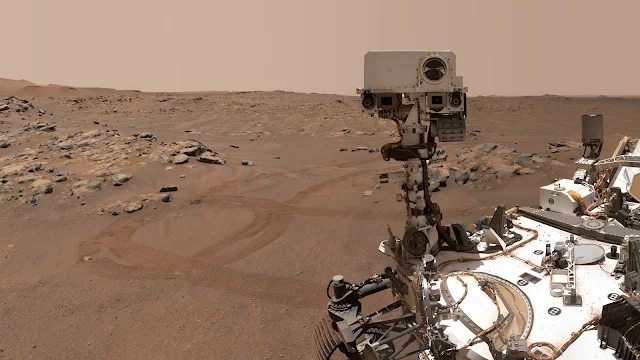NASA claimed a few months ago that it had successfully created oxygen on Mars for the first time.
The Mars Oxygen In-Situ Resource Utilization Experiment (MOXIE) can now manufacture oxygen dependably, according to comprehensive results from the experiment, which was tested seven times in diverse settings, night and day, and across two Martian seasons.
According to Science Advances, the experiment was able to give 6 grammes (0.2 ounces) of oxygen every hour, which is around the rate of a tiny tree on Earth. This may appear minor, but it demonstrated that the technology is capable of tackling the challenging task ahead.
“This is the first demonstration of actually using resources on the surface of another planetary body, and transforming them chemically into something that would be useful for a human mission,” MOXIE deputy principal investigator Jeffrey Hoffman, from the Massachusetts Institute of Technology, said in a statement. “It’s historic in that sense.
MOXIE is one of several instruments on Perseverance, hence it cannot operate indefinitely like a full-scale version. It takes hours to warm up before starting work. Martian air is purified before being compressed. The air is then sent through the SOXE, which separates it into carbon monoxide and oxygen. This process lasts an hour.
“The atmosphere of Mars is far more variable than Earth,” Hoffman noted. “The density of the air can vary by a factor of two through the year, and the temperature can vary by 100 degrees. One objective is to show we can run in all seasons.”
MOXIE has been shown to create oxygen under restricted conditions, during the fall and winter months, and at various times of day and night. The team plans to put it to the test in the spring, when the weather changes swiftly.
“The only thing we have not demonstrated is running at dawn or dusk, when the temperature is changing substantially,” added Michael Hecht, principal investigator of the MOXIE mission at MIT’s Haystack Observatory. “We do have an ace up our sleeve that will let us do that, and once we test that in the lab, we can reach that last milestone to show we can really run any time.”
The goal is to generate enough oxygen to not only sustain multiple astronauts, but also to provide fuel for the Mars Ascent Vehicle, which will transport the astronauts back to orbit and ultimately to Earth.
A scaled-up version of MOXIE would provide enough oxygen for a crew of six arriving 26 months later, producing around 2 to 3 kilogrammes (4.5 to 6.5 pounds) every hour. A highly plausible situation that supports the viability of this strategy.
“To support a human mission to Mars, we have to bring a lot of stuff from Earth, like computers, spacesuits, and habitats,” Hoffman said. “But dumb old oxygen? If you can make it there, go for it – you’re way ahead of the game.”
The team is excited to put MOXIE to the test in the spring. They intend to push the device to its limits with higher air density to discover how much oxygen it can produce.
Reference(s): Science Advances

Comments
Post a Comment
Share your thoughts